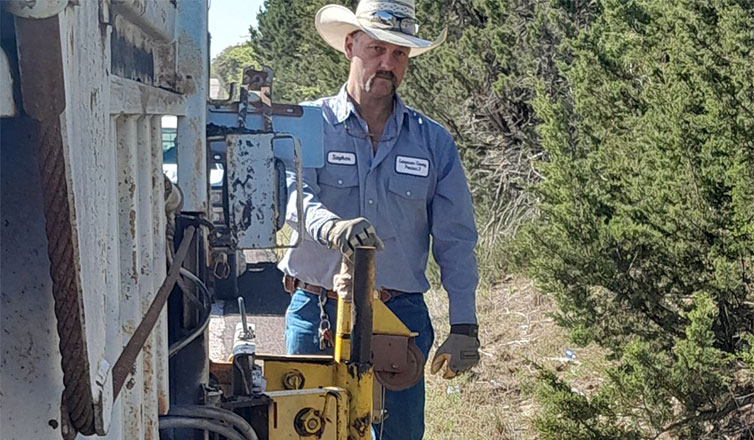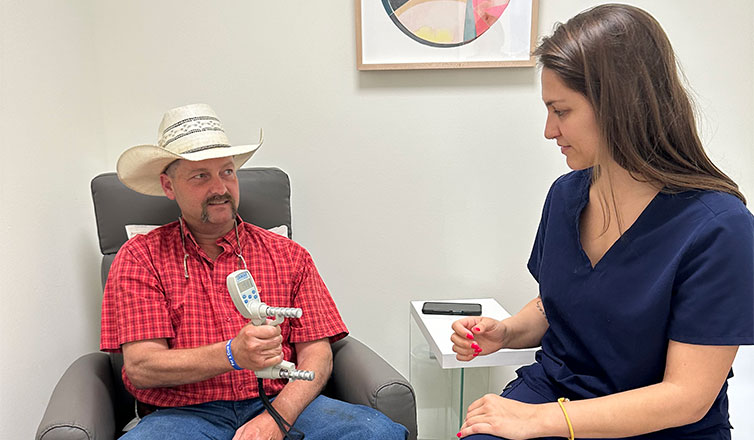51-year-old Stephen Hamilton appreciates a good day of hard work, now more than ever before. He takes pride in his job doing road construction for Lampasas County, Texas, spending days driving heavy machinery and pouring concrete to get his job done well. In the spring of 2023, he started losing his balance and falling unexpectedly. After about a half dozen falls, he realized something was wrong and ultimately came to Austin Neuromuscular Center where he was diagnosed with inclusion body myositis (IBM).

“IBM is a slowly progressive muscle disease that can lead to weakness over decades, especially in the hands, forearms, and quadriceps,” explains neuromuscular neurologist Dr. Hannah Machemehl. “Some patients develop difficulty swallowing or may use a wheelchair for ambulation.”
Inclusion Body Myositis (IBM) Symptoms, Diagnosis and Treatment
As muscles in IBM patients atrophy, they may experience these symptoms:
- Tripping and falling
- Knees giving way
- Drop Foot (difficulty raising the front of the foot)
- Difficulty walking
- Loss of strength in hands
- Difficulty swallowing
Stephen underwent several diagnostic services at ANC to confirm his condition. He had a clinical exam, lab testing, an Electromyography (EMG) & Nerve Conduction Study, and a muscle biopsy. There is currently no cure for IBM, but patients like Stephen have the opportunity to participate in clinical trials for muscle diseases at ANC that often offer hope.
“It’s wonderful that ANC gives their patients the chance to be in groundbreaking clinical trials,” says Stephen. “I believe those trials may lead to better treatments one day, and we should all do our part in helping other people in the long run.”
“Currently treatment for IBM is supportive,” says Dr. Machemehl. “We optimize functionality, pain control, energy maintenance, swallowing function, breathing function, and independence. We facilitate care with services like physical, occupational, or speech therapy as appropriate.”
Stephen’s Road Ahead
When Stephen is not at his road construction job, he works part-time at a friend’s ranch and spends time with his wife, two sons, and two grandchildren. Since his diagnosis, the quadricep muscle has weakened in his left leg, the back of his right arm is more challenging to control, and he has lost some strength in both hands. At the end of the day, he says it’s harder to move, but he refuses to give up.

“The only thing this stupid thing has done has slowed me down,” says Stephen. “I may be slow and steady, but I’m not letting this beat me.”
He will continue getting up and going to work at a job he’s thankful for as long as he is able, facing each new day with determination to keep moving.
To learn more about Austin Neuromuscular Center, the conditions we treat, and our clinical research, click here or call (512) 920-0140. Follow us on Facebook, LinkedIn, Twitter, and Instagram for important updates.
